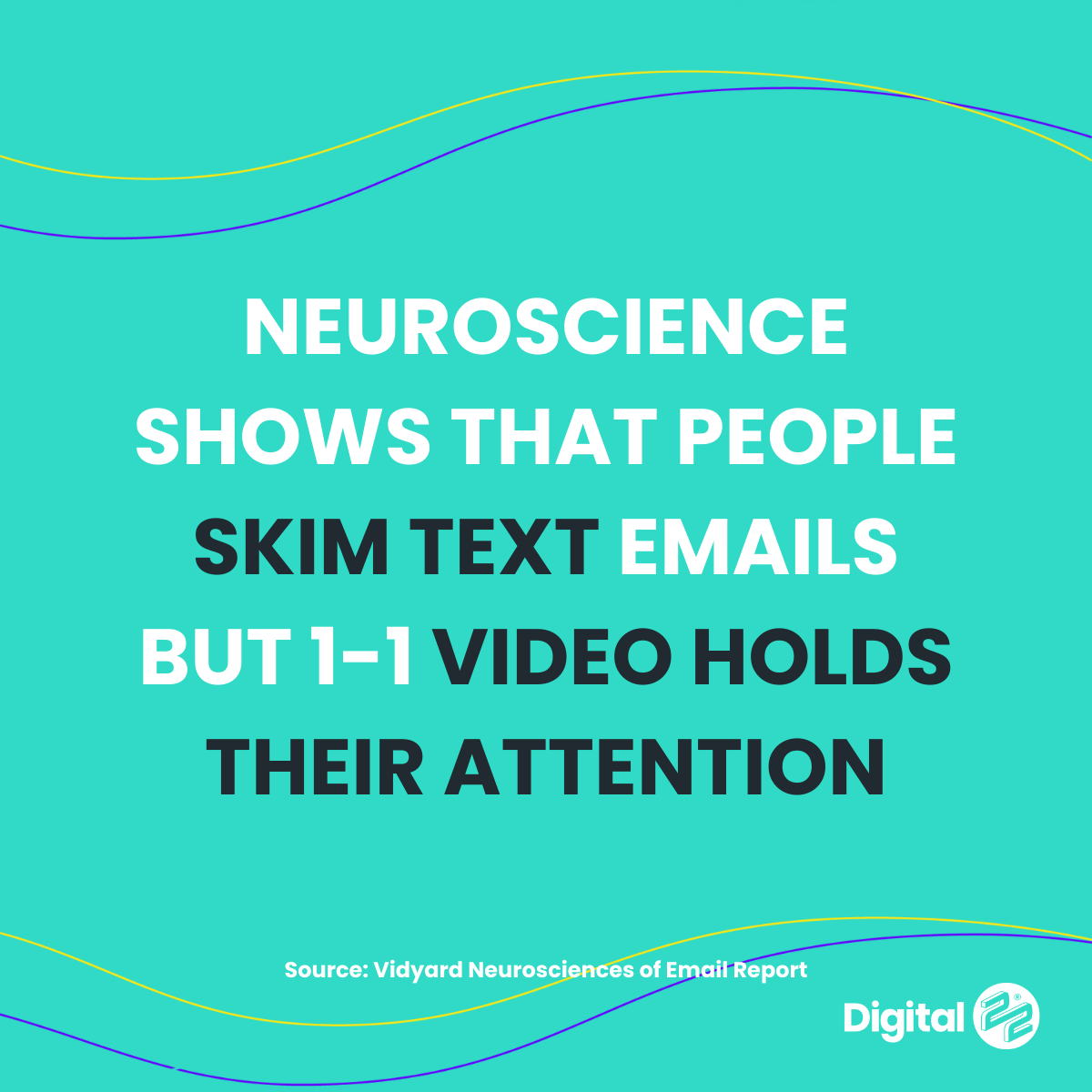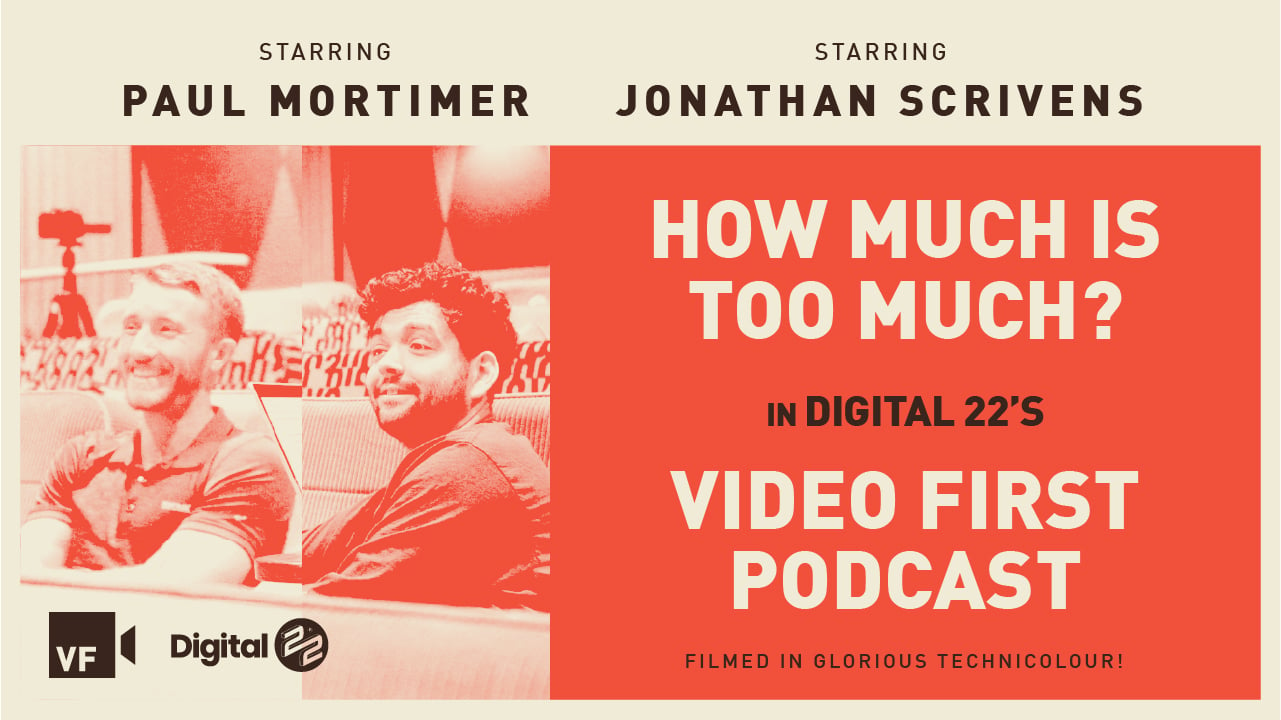Video content is some of the most engaging content across the web. According to Wyzowl, 83% of video marketers say video has helped them generate leads. From a consumer perspective, 84% of people say watching a video has convinced them to buy something.
Video is imposing, exciting and is available across all platforms and present on all of our devices. A site like YouTube has people watching over a billion hours of video every single day.
Today, marketers see the value of video and are seizing the opportunity of including it as a dedicated part of their marketing strategy. You might be thinking, “This is something I’ve seen others doing — how can I start using it?”
- Utilising inbound video
- Video throughout the buyer’s journey
- Our best practices for video marketing
- Adopting a video first approach
Utilising inbound video
Inbound marketing aims to provide solutions to problems its target audience and the personas within it might be experiencing. These solutions can be presented in many forms, such as blogs, infographics or lengthy guides.
It might seem counterintuitive to offer answers for free. However, marketing campaigns like this have no equal when it comes to building trust.
When you can build trust and develop relationships with potential customers, they’re more likely to do business with you. You can find out more about the inbound methodology by checking out our guide here.
In the past, most businesses would only focus on blogs and ebooks — written content that’s helpful and easily accessible. Video wasn’t utilised because a) not many people had the time or resources to use it effectively and b) honestly, many just hadn’t thought about using it.
Inbound video is created for the exact same reasons. It’s visual content that helps answer questions and develop new relationships with leads and prospects.
Video can be used in any part of your marketing strategy, such as:
- Social media: Videos placed over Twitter, Facebook and Instagram are perfect at quickly hooking potential prospects in.
- Emails: Videos add an extra flair to your email campaigns. Add ‘video’ to your subject lines and you’ll see a 19% increase in open rates
- Landing pages: A landing page is the first thing people see when clicking on links in emails and posts. It’s prime real estate for a compelling marketing video
Video throughout the buyer’s journey
You can use video in each part of the buyer’s journey, with each one acknowledging challenges and offering solutions to those experiencing them. Videos like these help guide people through the buyer’s journey, getting them closer and closer to a purchase.
Inbound marketing is structured into stages, from awareness to decision. So, what types of inbound video work in these stages?
Awareness videos
At the awareness stage, potential customers are only just identifying that they have a problem.
Any video you produce at this point should empathise with the prospect, offering general help and advice, while introducing the first tastes of a potential solution. These include:
- Social videos that display brand personality
- Explainers
- How-tos
- Industry news
Consideration videos
Consideration is about offering more bespoke information or solutions, something that might directly reference your offering in some small way. It isn't the time to specifically shout about your solution, but you can delve into these more readily than in awareness stage content.
Consideration videos might detail a solution, educating a prospect and moving them further down a specific pathway. Think about filming:
- Advice-filled webinars
- Landing page videos
- In-depth explainers
- Product or service demos
Decision videos
Prospects in the decision stage will weigh up which solution to go with, which means videos at this stage will need to fully display what your solution offers and why it’s the one to choose.
Decision videos detail the functionality, purpose and effectiveness of a solution. They’re also a good opportunity to add an emotional, engaging paradigm to a product — something a product or service description could never really do.
So what type of videos suit this stage?
- Client testimonials
- In-depth demonstrations
- Company culture videos
- Personalised videos
Delight videos
The final stage of the buyer’s journey. Delight is where even more info or entertainment is given to a prospect, even if they’ve already bought from you. It’s the kind of content that keeps people coming back. Some types of video that fit in here include:
- Thank-you videos sent after the purchase
- Onboarding videos
- Educational videos such as free courses or product training videos
Our guide to inbound video
Looking for more information on what inbound video is and where it can be used? We’ve got the resource for you. It’ll only take a few minutes to skim through this guide, where you’ll find information on:
- Where to use inbound video
- How much inbound video costs
- How to carry out a shoot
- The types of inbound video
- How to execute it
So after 20 minutes, you’ll be fairly well-versed in all things inbound video. Just click the button below to start learning.
Our best practices for video marketing
Make your videos memorable and compelling
For any video to make an impact, it needs to be memorable and compelling. For this to occur, your video must be digestible and relevant — not super long and rambling.
This idea is well explained in the book, Made to Stick by Chip and Dan Heath. They call things like this ‘sticky’ — such as JFK’s ‘Man on the Moon’ speech — an incredibly memorable bit of writing.
The Heath’s argue that ideas (or video in this case) must follow six principles:
- Simple: Having a core message that’s easy to understand
- Unexpected: Using the medium to evoke curiosity
- Concrete: The idea must remain clear in people’s minds
- Credible: Backed up by tangible evidence
- Emotional: Allow for people to relate to it
- Story-driven: Has a narrative that inspires people to make some sort of change
You can apply this to videos in marketing strategies. More than that, they’re the perfect medium for these principles.
Film for your audience
Who are you talking to? Who’s most likely to listen? Who has worked with you or a similar business before and would like to again? The answers to these questions are what are known as buyer personas — representations of your market.
The content you create must be tailored to these personas to resonate with them. Does the content approach their challenges and provide solutions? If not, then they won't watch — regardless of how well-made it is.
Similarly, you have to use the right tone of voice. Talk to them how they want to be talked to. If your customer base is predominantly busy professionals, why are you making 30-minute long videos? Make them short and sharp.

Before you begin making videos, gather insights about the main demographics within your customer base. These will help inform what future content you create.
Analyse your videos
It isn't just blogs or social media you can analyse. Video too can tell us a lot about what works and what doesn’t. Over time, video analysis will help you produce better and increasingly effective video content that your personas will find irresistible. So what can you track?
- Engagement: This measures any interaction had with the video, such as how much time they spent watching. It helps give an indication of the quality of information you’ve added to the video. Platforms such as Vidyard can accurately track who's watching and who is exiting
- Social sharing: People share content they care about, so how many shares you get represents how interesting or useful a certain demographic is finding your video content
- Play rate: This is the number of people who actually clicked play. Obviously, a higher number is better but don’t think it’s the be-all and end-all. People could press play then immediately exit. So this metric and engagement need to go hand-in-hand
- View count: Like play rate, the higher the better. Yet, the view count isn’t super important, as long as the engagement is high. Yes, only 100 people might have watched, but if they’re watching to the end, they’ve found the content compelling and relevant, meaning they’re more likely to want to find out more
Additionally, you should note whether comments and feedback are either positive or negative. You never know what kind of random comment could contain an excellent idea.
Adopting a video first approach
Video first means using video across the whole infrastructure of your marketing campaign.
Gone are the days when video was only used for a product description. Now, you can use videos to communicate and summarise, as well as inject personality into how you market to people and how you carry out your work.
You can add videos to your internal and external emails, your social media posts and your webpages. It’s a versatile, relevant and enjoyable tool.
The phrase ‘tool’ is important here because many marketers only see it as a medium, something to create as a one-off. It’s another skill, another tool under your belt. Imagine fixing a car with only one screwdriver. It might be a super expensive, fancy screwdriver that glows in the dark and has Bluetooth — but it’s just one tool. You won't get very far with it.
Video first requires a holistic approach to video utilisation, where you update your entire marketing efforts into an ecosystem populated by relevant video.
Fancy seeing more about how to properly use video in your marketing strategy? Watch our Video First podcast episode below, exploring how to best use this exciting medium.

Well, you’ve read this far. I’m pretty sure that means you’re up for more bespoke information that you can use to improve your digital marketing strategies.
We’ve developed a free course on the fundamentals of inbound video you can begin today. Scroll down to find out more.
Tried and tested video marketing strategies
This free course is for people who want to learn about the impact of video marketing. It provides the tried and tested strategies we have used to great effect. Strategies you can implement straight away with no need to budget concerns.
Trial and error is a classic method for progress, but why waste time on error when your answers are right here? Click the link below to enrol.
Real Growth. Real Impact.
AI and HubSpot: Transformation... If Enabled Properly
Making AI adoption not a big deal with Mike Kaput from The AI Show
HubSpot's Spring Spotlight 2025 was not what we expected
The Power of Community in Marketing
The Return of Human Marketing in an Automated Age | Avidly Talks
How to make change projects a success - Change management tactics
How to prompt AI for great creative ideas
See why enterprises choose Avidly
Let’s build your HubSpot success story
Compelling final call to action - with accompanying link to Contact page







